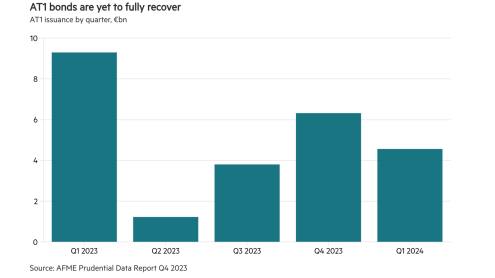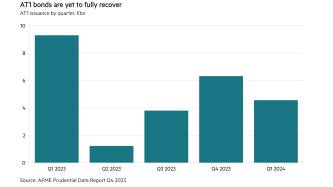What's happening?
For the past year or so, European policy-makers, such as European commissioner for financial services Jonathan Hill, have been telling just about anyone who will listen that they want to make EU financial regulation more effective and proportionate.
In that spirit, and much to the relief of bankers and brokers, the European Commission ordered the European Securities and Markets Authority (ESMA) to make revisions to its liquidity rules, pre- and post-trade disclosures and bid and offer price requirements for instruments such as bonds.
This is an important component of the Markets in Financial Instruments Directive II (MiFID II), which is set to go live across the EU on January 3, 2018.
ESMA is proposing to roll out the framework over a four-year period, giving participants more time to adapt, and fewer instruments will be caught up in the new rules. For example, the authority wanted to capture instruments traded twice a day from the start. But instead, from January 3, 2018, it will be 15 trades a day gradually falling to two trades from May 16, 2021. Also, bond issues covered by the rules will be €1bn in size before falling to €500m two years later.
There is also an obligation to publish pre- and post-trade prices. Besides adding to the compliance burden, this rule unnerved certain participants.
The European Commission responded by suggesting that local supervisors be given the power to provide waivers or delays in reporting pre-trade and even post-trade prices in cases where holders of illiquid instruments would be at risk of being exploited by other market participants and therefore in danger of not getting the best prices.
This would apply to bonds, structured finance products, emission allowances and derivatives. In the European Commission’s view, these waivers should be applied across all regulated markets, multilateral trading facilities, organised trading facilities and investment firms trading outside of trading venues equally and in a non-discriminatory manner. The whole point of the rules is to ensure investors’ interests are protected and these waivers go some way towards doing that.
Why is it happening?
The move was made due to widespread industry complaints over the sheer volumes of data required, not to mention the big investment in IT and compliance systems that is needed. Many were complaining that the whole regulatory piece was unworkable.
Though ESMA is pretty much sticking to its guns in terms of what it wants the industry to do, it is giving it more time to adapt.
What do the banks say?
Overall, the banks and brokers have breathed a big sigh of relief over ESMA’s concessions.
They are very much hoping that this more gradualist approach will buy them more time not only to make the necessary investments, but also to iron out any potential teething problems that may arise once the rules are applied. Effectively, this should enable market participants and regulators to patch up any unintended consequences before serious damage is done to the markets concerned.
Nonetheless, not everyone is happy – some point out that the requirements go beyond those in the US where, for example, there is not an obligation to report pre-trade prices, only those on actual transactions.
Also, it is maybe another example of hastily drafted rules leaving a raft of fiddly technical details with potentially big consequences that need to be ironed out. Indeed, it is just the kind of thing that has led to the entire MiFID framework being delayed by a year to 2018.
Will it provide the incentives?
Europe’s markets should become more transparent, better regulated and fairer, particularly for investors. In theory, that should build confidence and help underpin the European Commission’s aim of building an EU capital markets union capable of supporting the funding needs of European businesses and the aspirations of investors.
However, such is the scale of investment required by market participants that it will impose hefty costs and may nullify the trading of some instruments. The industry is hoping that if this looks likely to happen, Europe’s policy-makers will live up to their word, be pragmatic and rethink some of its aspects.
It is also worth pointing out that in terms of corporate bonds at least, the vast majority – something around the 95% mark – will not be caught out by these requirements. Most issues are below €1bn and even €500m and soon after launch almost all cease to trade, not even twice a day in most instances, as they tend to be snapped up by long-term investors who hold them until maturity.
Even the stratospheric growth of electronic platforms, which directly match bond investors and could see more activity in illiquid bonds, such as MarketAxess, are unlikely to make that much difference (if any) to the number of securities netted in the new rules.











